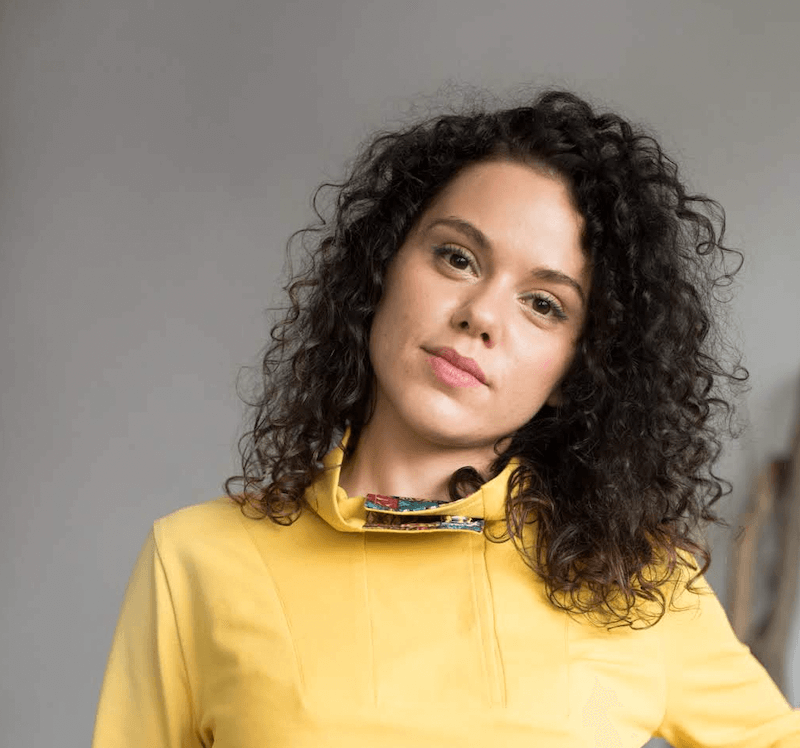Blockchain revolution: explore 5 branches that are ready for Web 3.0
Karolina Kondrak
10 min of reading
2022 saw an abundance of blockchain applications. The technology is gaining well-deserved recognition outside the cryptocurrency world. However, its potential is definitely not yet exhausted. What do the next quarters hold for us?
Find out which industries blockchain may soon change beyond recognition. You will also learn about examples of projects where bold ideas for using this technology have already been successfully implemented.
1. Artificial intelligence and blockchain or the perfect match
Pairing of AI and blockchain – what does it offer?
The reputation of artificial intelligence precedes it, and probably no one needs any further persuading that it is a prospective topic. At the turn of 2022 and 2023, AI gained extraordinary momentum and we can now see a veritable explosion of bots and AI-based applications.
Together with blockchain, they make up the 'royal couple' of the technology world and jointly they can conquer the world. The common denominator of both technologies is working with data. AI and blockchain work perfectly together in this regard.
Artificial intelligence is great at analytics – it brings in intelligent automation. Blockchain, on the other hand, provides an element of certainty and security: it provides us with the peace of mind that our data is secure and that it is trustworthy.
In what areas will the combination of AI and blockchain be successful?
The belief that the data on which AI works so effectively is reliable and secure is extremely valuable, especially as this combination of technologies has great potential for growth in industries that use sensitive data, such as medicine, healthcare or finance.
The following three words perfectly capture the advantages that the symbiosis of artificial intelligence and blockchain can bring to business operations. And the fact that they can be associated with the slogan of the revolution seems quite appropriate.
The strengths of the combination of AI and blockchain
Authenticity
The digital blockchain records provide insight into the origins of the data used by artificial intelligence, solving many of its problems. This helps to increase confidence in the integrity of the data and, in turn, in the recommendations provided by the AI. Using blockchain to store and distribute AI models ensures an audit trail, and the pairing of blockchain and AI can increase data security.
Augmentation
Artificial intelligence can comprehensively read, understand and correlate data at incredible speeds, bringing a new level of intelligence to blockchain-based business networks. It provides access to large amounts of data from within and outside the organisation, while helping to scale artificial intelligence to provide more actionable insights, manage data usage and model sharing, and create a trustworthy and transparent data economy.
Automation
Artificial intelligence, automation and blockchain can bring new value to business processes across a range of issues – eliminating bottlenecks, speeding up work and increasing efficiency. For example, AI models embedded in smart contracts executed on blockchain can direct expired products to be recalled, execute transactions – such as re-orders, payments or inventory purchases based on set thresholds and events – resolve complaints and select the most beneficial shipping methods.
Selected projects combining blockchain and artificial intelligence:
-
Burst IQ
A platform using AI and blockchain to provide healthcare professionals with access to patients' data. It also enables the management, sale, exchange of medical information for scientific research.
-
Elblox
A p2p platform connecting local energy producers with consumers, allowing them to choose the best deals from different suppliers. Thanks to blockchain, data on the amount of energy produced and consumed is recorded and available to each party.
-
Atende
Smart prepaid meters with light nodes, allowing users to conveniently recharge and control costs.
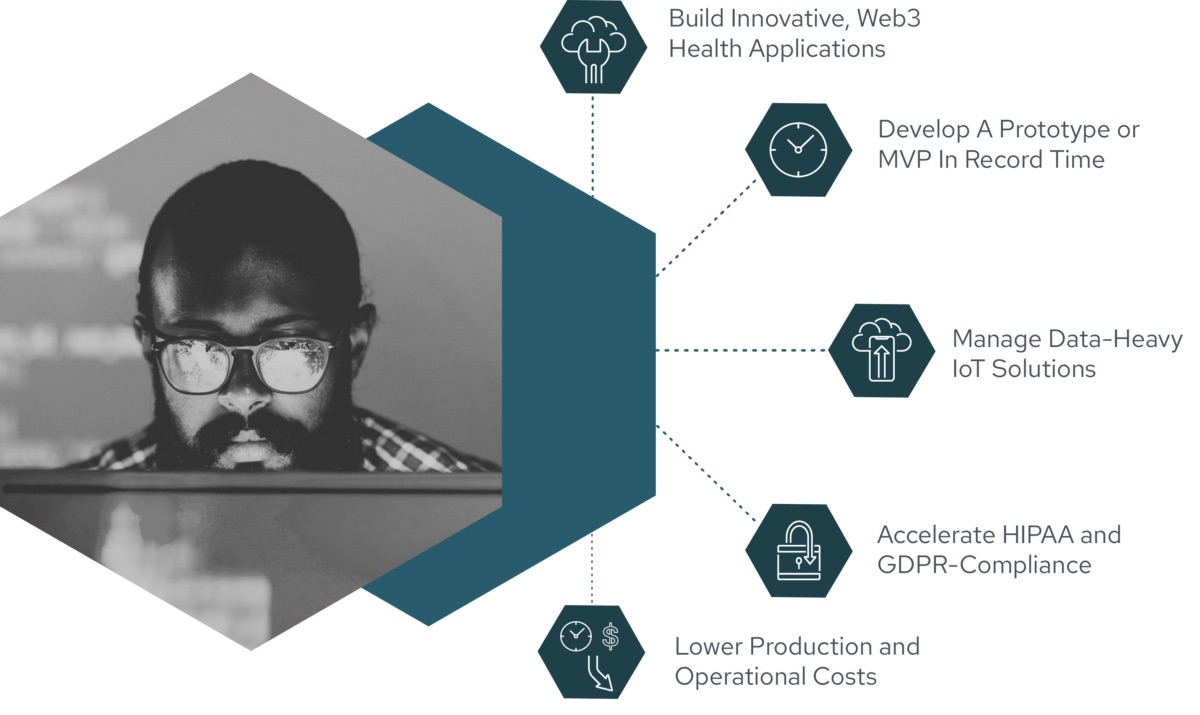
Burst IQ - a platform using AI and blockchain in the healthcare industry. Source: Burst IQ.
2. Smart cities, or the Internet of Things and blockchain for metropolitan residents
What is a Smart City
The concept of a smart city is the combination of information and communication technologies (ICT) and the Internet of Things (IoT) for efficient and automated city management, providing better services and support to citizens or optimising resource management, which can result in greater savings.
How Blockchain can help the Smart City
Cities can leverage existing IoT connections that are already involved in providing the smart city standard. All of these devices collect large amounts of data, which can successfully be stored on blockchains in a secure way.
What areas can blockchain support Smart Cities in?
Pedestrian traffic and transport
Blockchain together with the Internet of Things will improve the management of vehicle and pedestrian traffic as well as public transport. IoT and blockchain-based applications can support authorities in making decisions about route planning or timetables. Thanks to blockchain technology, huge data sets can be collected and these will provide valuable historical information. The data stored on the blockchain cannot be tampered with, which translates into reliable analysis and trustworthy conclusions.
Waste management
Blockchain together with and IoT can support waste management by providing transparent data on the amount, transport and recycling of waste.
Administration and the everyday life
The potential of blockchain combined with IoT can be used to monitor and manage any other residents' data, such as on health or vehicle registration, increased traffic, air quality.
Smart energy
Blockchain has the potential to simplify energy production and optimise electricity, water, gas consumption and improve resource management. The transparency offered by blockchain-based solutions can support openness and efficiency in transactions, regulations and energy distribution. Data from energy management systems can be stored securely through blockchain and provide a reliable source for demand and supply analysis.
Selected smart city projects based on blockchain:
-
Reno
The city of Reno (USA) intends to create a register of historic places using blockchain technology. It is intended to streamline the approval process for changes to historic buildings. The system will be implemented by BlockApps.
-
Miami
Miami will implement an air quality monitoring system built on Algorand. The solution, developed by French company Planetwatch, involves the deployment of a network of sensors operated by volunteers who will be automatically rewarded for the data they send.
3. Fashion blockchains in fashion
Haute couture based on the blockchain
The fashion world is increasingly keen on metaverse and advanced technologies. In terms of blockchain, the technology can be used to link digital and physical products as an NFT token, allowing holders to freely trade the product online as an NFT before taking delivery of the physical piece. Designers can also incorporate avatar/character redesign in the form of NFTs into their set of services. 3D images, avatars, exhibition halls and AR filters that are interactive in the metaverse can also be created in the form of non-exchangeable tokens.
Prêt-à-porter based on blockchain
Blockchain technology can be applied to the creation of digital forms of design and their sale as NFTs, prior to the actual release of a particular collection/single product series. This can reduce production costs and gain more certainty about the market needs for the product. For this it will be useful to do drops, but in NFT form. Digital collections also function as membership cards that offer the holder exclusive experiences and products.
Selected projects combining blockchain and fashion:
-
Metaverse Fashion Week
A fashion week organised by Decenterland that showcased digital collections from 50 brands, including Paco Rabanne, Tommy Hilfiger, Elie Saab, Dolce & Gabbana.
-
NIKELAND
Nikeland is a Nike-branded metaverse created on the Roblox gaming platform. Nike also owns RTFKT, the studio that creates NFT shoes.
-
NTZNS
NTZNS is a fashion brand creating digital clothing for both real-world influencers and avatars.
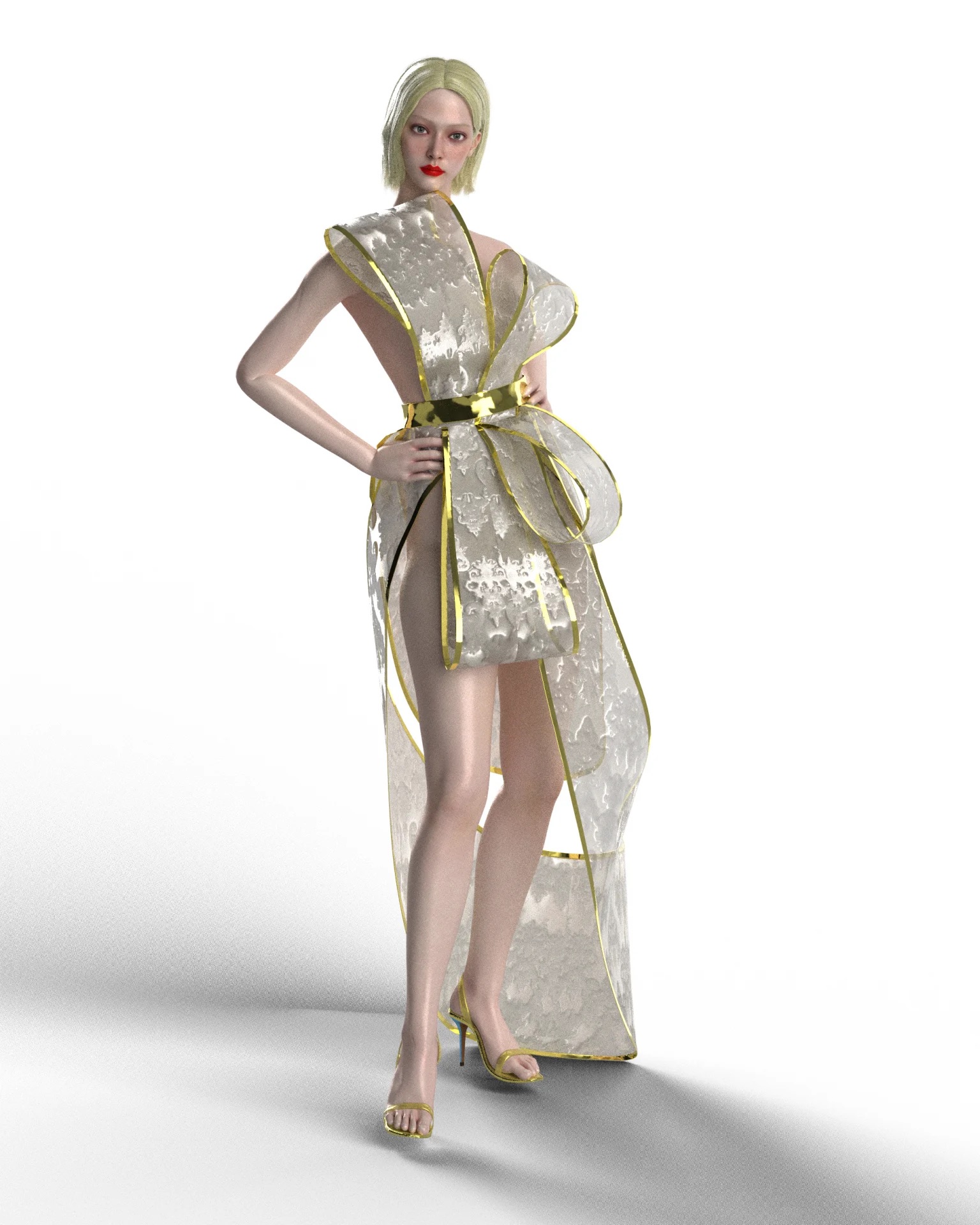
Outfit for avatar available on NTZNS. Source: NTZNS
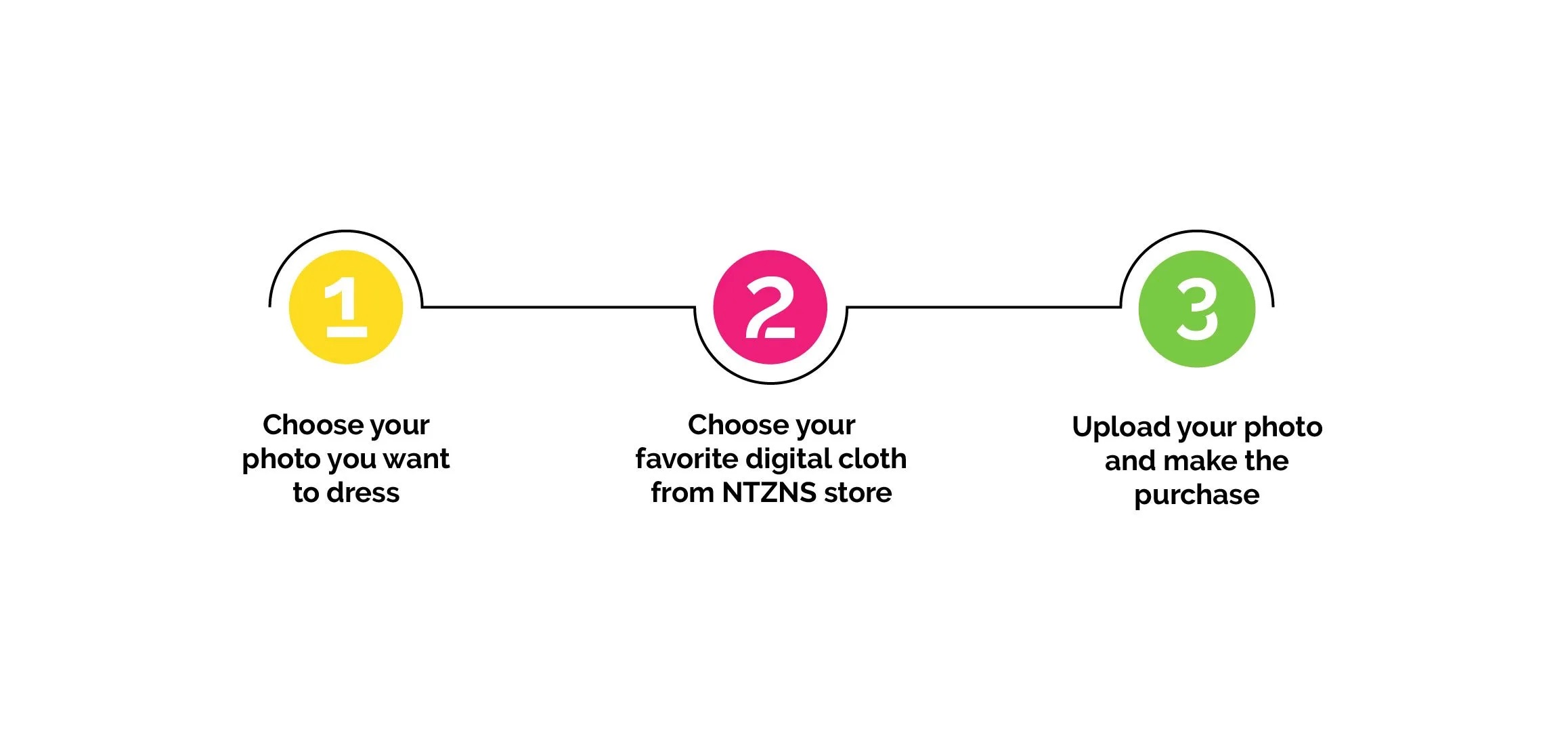
Part of the NTZNS interface, a platform selling digital fashion. Source: NTZNS_.
4. Sport in blockchain
What blockchain can accomplish in sport
Blockchain is boldly entering the field of sport, offering solutions not only to athletes but also to fans. Sport is an industry that brings together a huge community. This potential is like fertile ground for new technologies that are based on data processing, transactions, sales of equipment, events and also collectibles. In all these areas, blockchain has room to grow.
Moving is paying off: get active and earn money
Blockchain and GPS technologies are at the heart of projects enabling people to monetise their movement, such as run2earn or ride2earn. All you need to do is buy an app and relevant NFT items (e.g. shoes) to earn by moving. Workout2earn works similarly, relying on equipment that measures your heart rate and rewards you for physical activity.
Sports data analytics stored on blockchain
Data analysis is an important element in sport. This applies to the performance reports of individual athletes, professional and amateur, as well as the performance of entire teams and clubs. The data collected translates into better adapted training plans, player settings (such as in baseball, where small changes in the batting angle make a big difference to statistics), and better results. Data collected by clubs can constitute intellectual property, and athletes' biometric information should be protected as personal health data. And where large data sets and long-term analysis come into play, and the need for secure storage and transparency, that's where our super hero comes in: blockchain.
Loyalty and fan engagement platforms
Blockchain-based platforms are used to build and animate dedicated fan communities. Supporters or active enthusiasts of a particular sport can be rewarded for specific actions, such as creating and sharing media content. They can also participate in loyalty programmes, collecting points and rewards that are later redeemable for tickets or digital collectibles.
Collectibles, cards and NFTs
Digital collector items are based on NFT technology, or non-fungible tokens. These are unique and often scarce items whose uniqueness is guaranteed by blockchain technology. Thanks to this, clubs, sports teams can sell digitally linked cards, in-game assets (also in esports), memorabilia from matches played (such as balls from the Italian Super Cup in 2022), which fans can purchase, exchange or treat as an investment.
Selected projects featuring sport and blockchain:
-
Socios
In the project, fans were able to purchase NFT tokens that corresponded to the tagged balls that scored during the 2022 Italian Super Cup final. The match ended with a score of 3:0, so three unique tokens went on sale.
-
Sorare: Own Your Game
A fantasy football game that involves collecting footballer cards saved in NFT form and participating in tournaments.
-
STEPN
A fitness app that allows you to earn money by moving around. This requires the purchase of shoes (in the form of NFTs), the parameters of which affect the speed of your profits. Movement is monitored through GPS data.
-
Sportmonks
A service that uses the Chainlink node to provide sports data (such as team statistics, players, bookmaker odds, etc.).
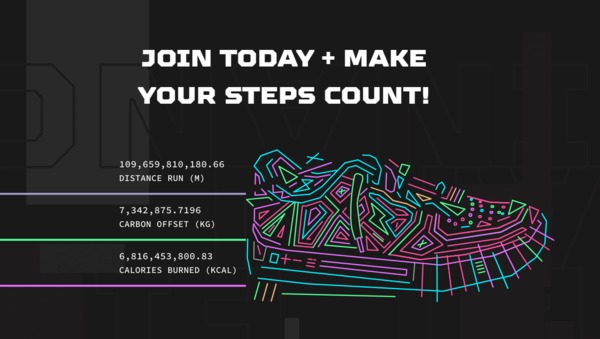
STEPN's digital NFT shoe that enables users to take part in a move2earn activity. Source: STEPN
5. Medicine: blockchain as a panacea for tough conditions
Why would blockchain work well in medicine? There are many reasons, and the most compelling arguments for it being the perfect match have already been mentioned above: automation, transparency, trust.
Medical records and blockchain
Health data, includes general information such as age, gender and potentially basic medical history, vaccination history or body parameters. None of this information on its own could be used to identify a specific patient, prompting the need to store it on a common blockchain that can be accessed by multiple people without privacy concerns (in most cases).
Medical data management and blockchain
Storing individual medical data on a blockchain can facilitate our transfer between different medical institutions. It will eliminate the problems of relocation to another clinic. Collecting and storing the generated data on the blockchain will provide automation and security for the documents.
Vaccine certification and blockchain
Concerns about the production and sale of fake vaccines have been a complex and massive problem in managing the global pandemic. In such cases, blockchain can serve as an ideal tool to verify the authenticity of vaccine shipments. In addition, blockchain can also help track the distribution of vaccines to ensure that vaccines reach the desired destinations. Another promising highlight of the future of blockchain in vaccine production and distribution will be the verification of vaccine integrity at various points in the supply chain. For example, blockchain technology can help ensure that batches of vaccines are stored consistently at the right temperature.
Selected projects combining medicine and blockchain-based solutions:
-
WholeCare Hub
The WholeCare platform brings together information about care plans, medication protocols, appointment setting and quality resources on a platform that allows individuals, support systems and multi-care facilities to better understand how to provide personalized care. The system is built on the blockchain network to be as secure as possible. WholeCare provides HIPAA-compliant record keeping.
-
Patientory
With Patientory, a patient's medical history, records, current providers and, most importantly, everything a healthcare practitioner needs to know is constantly and securely available. The blockchain platform allows patients and doctors to stay in constant communication, and the constant stream of medical data allows any doctor to quickly and securely diagnose patients based on a clearer medical history.
-
Nebula Genomics
Nebula Genomics aims to understand the human genome and make personal genomics more affordable. The company's whole genome DNA sequencing tests are the only tests available that decode 100% of a person's DNA. All information collected from a single test is completely anonymous and kept confidential thanks to access restrictions written into smart contracts, so user data will theoretically not be identifiable and stolen (by outsiders).
-
Medicalchain
Medicalchain's blockchain is used to verify whether a patient is covered by health insurance. In addition, it shows patients' medical records and identifies key candidates for various tests.
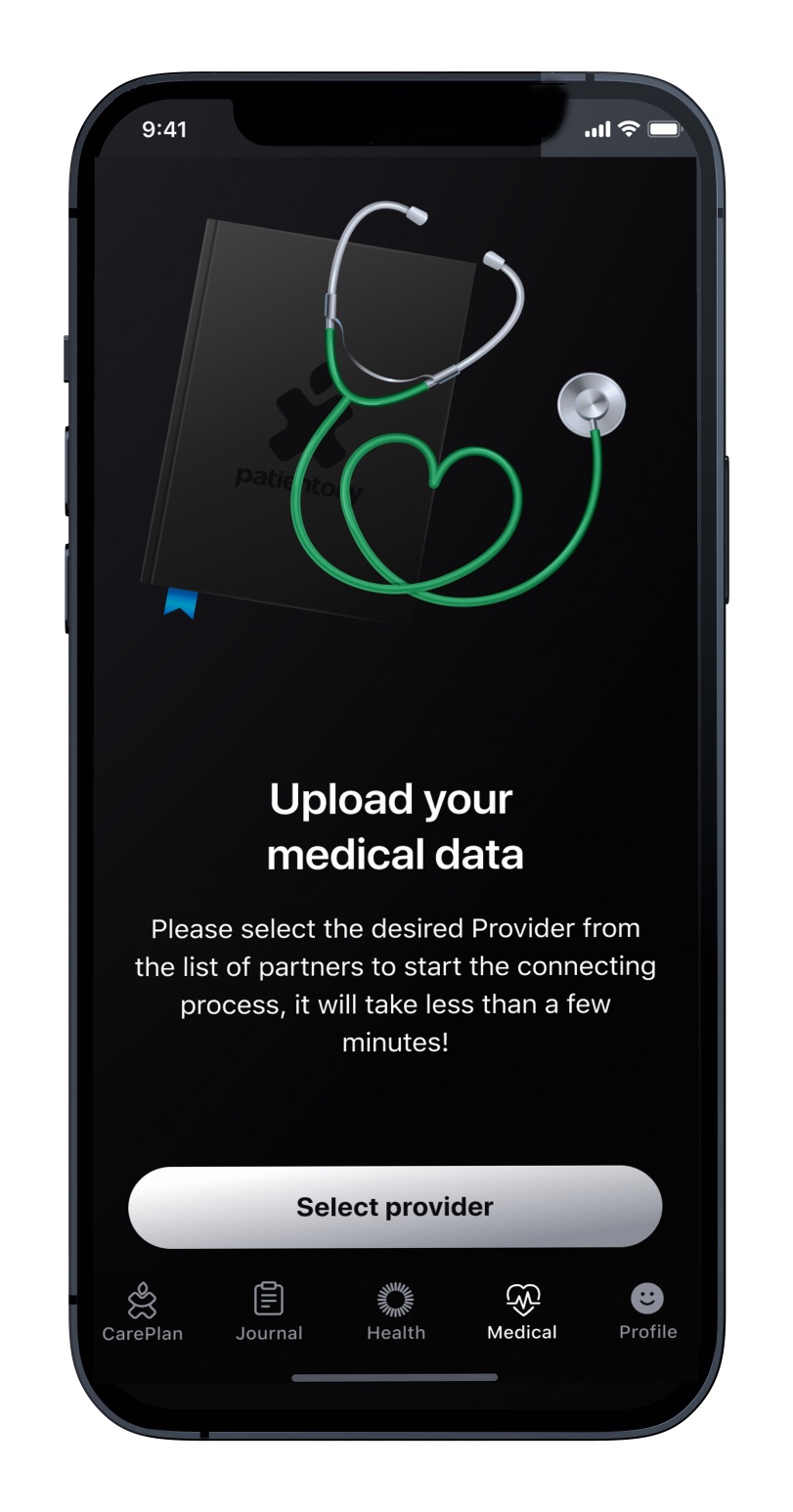
Interface of the blockchain-based platform for Patientory medical records. Source: Patientory
What's next for blockchain?
Blockchain has consistently made its way into more markets, often reshaping them beyond recognition. It is hardly surprising that almost every sector is reaching out for the unique benefits of blockchain technology. Blockchain is an open, decentralised ledger that permanently records transactions between two parties. All of this eliminates the need for third-party authentication. The credibility, transparency and reliability are solid reasons to expect that we will see numerous new opportunities for blockchain use in various industries in the near future.
